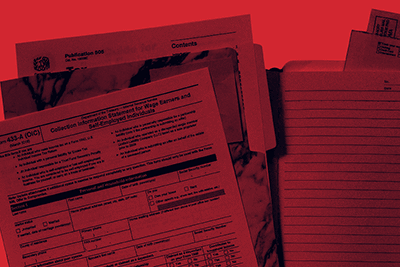Tax
Proposed ASU’s Impact on ASC 740 Income Tax Disclosures
Article reading time: 3 minutes, 30 seconds
Hot Take:

FASB’s revised disclosure requirements would place a significant focus on the disaggregation of tax-relevant amounts such as pre-tax income, income taxes paid, income tax expense, deferred tax carryforwards between federal, state and foreign. Additionally, the proposed amendments would require more detailed disclosures for the effective tax rate reconciliation and unrecognized tax benefits. Insurance companies need to contemplate the impact of these proposed changes on their statutory statements.
Full Article
On March 25, 2019, the Financial Accounting Standards Board (FASB) issued proposed updates to the income tax disclosure rules under ASC 740 in order to improve the effectiveness and relevance of disclosures for users of financial statements. The Proposed Accounting Standards Update – Income Taxes (Topic 740): Disclosure Framework – Changes to the Disclosure Requirements for Income Taxes (the proposed ASU) is applicable to all companies that are subject to income taxes. However, certain disclosure requirements within the proposed ASU are only required for public business entities.
Main Provisions of the Proposed ASU
Disaggregation
The proposed ASU would include the following additional disclosure requirements for all entities:
- Income (or loss) from continuing operations before income tax expense (or benefit) and before intra-entity eliminations disaggregated between domestic and foreign;
- Income tax expense (or benefit) from continuing operations disaggregated between federal, state, and foreign;
- Income taxes paid disaggregated between federal, state, and foreign.
JLKR SAP Insight
The Statement of Statutory Principles (SSAP) No. 101 excludes state income taxes from the definition of “income taxes incurred” and instead requires that state income taxes be reported as part of underwriting or general expenses. Absent guidance from the NAIC, it is reasonable to conclude that the disaggregation requirement for state income tax expense and state income taxes paid would not apply to insurance companies.
Deferred Tax Carryforwards
With respect to deferred tax carryforwards, the proposed ASU would require the following additional disclosures for public business entities:
- Deferred tax carryforwards (tax-effected) disaggregated by federal, state, and foreign and further disaggregated by the time period of expiration as follows:
- carryforwards expiring within each of the next five years after the reporting date;
- total amount of carryforwards for any remaining years;
- total amount of carryforwards that do not expire.
- Any valuation allowance recognized for deferred tax carryforwards disaggregated by federal, state, and foreign;
- The amount of unrecognized tax benefits that offsets the deferred tax asset attributable to carryforwards.
An entity other than a public business entity would need to disclose the total amount of gross tax credit carryforward and gross tax loss carryforward (not tax effected) disaggregated by federal, state, and foreign, along with a range of their expiration dates.
JLKR SAP Insight
If the NAIC adopts the guidance in the proposed ASU when it is published final, the disaggregation requirements for deferred tax carryforward would likely carry into admissibility calculations as well. Consequently, admitted deferred tax carryforwards would need to be disaggregated between federal, state, and foreign. The current guidance under SSAP No. 101 requires insurance entities to disclose the components of the net DTA or DTL by tax character.
Effective Tax Rate Reconciliation
The proposed ASU would require public business entities to individually disclose any rate reconciling items that amount to more than 5 percent of the amount computed by multiplying pre-tax income by the statutory tax rate. Additionally, public business entities would need to provide an explanation of the year-to-year change in reconciling items included in the effective tax rate reconciliation schedule.
Consistent with the existing guidance, entities other than public business entities are not required to disclose a numerical reconciliation but need to disclose the nature of the significant reconciling items.
JLKR Observation
For U.S. companies with a statutory federal tax rate of 21 percent, items greater than 1.05 percent would need to be separately disclosed within the effective tax rate reconciliation table. This requirement is consistent with SEC Regulation S-X, Rule 4-08(h) for Income Tax Disclosures.
Unrecognized Tax Benefits
The proposed ASU eliminates the current requirement to disclose positions for which it is reasonably possible that the associated unrecognized tax benefits will significantly increase or decrease within 12 months of the reporting date and to provide an estimate of the reasonably possible change. The proposed ASU would add a requirement to disclose the line items in the statement of financial position in which the unrecognized tax benefits are presented and the related amounts of such unrecognized tax benefits for each line item.
JLKR SAP Insight
SSAP No. 101 specifically requires that for any income tax loss contingencies for which it is reasonably possible that the total liability will significantly increase within 12 months of the reporting date, the reporting entity disclose an estimate of the range of the reasonably possible increase. Insurance companies will likely need to continue making this disclosure unless the NAIC adopts the amendments in the proposed ASU when they are issued final.
Relevant Dates
The amendments in the proposed ASU would be applied prospectively once the ASU is issued in its final form. The FASB is requesting comments on the proposed amendments by May 31, 2019.
